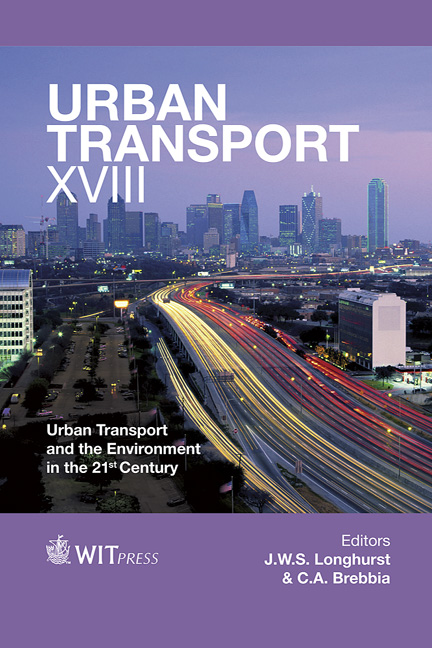Parking Inventory Management: A Logistics Perspective In Urban Traffic Congestion Mitigation
Price
Free (open access)
Transaction
Volume
128
Pages
10
Page Range
503 - 512
Published
2012
Size
334 kb
Paper DOI
10.2495/UT120431
Copyright
WIT Press
Author(s)
V. Fiorillo & R. Secchi
Abstract
With the introduction of Travel (or Transportation) Demand Management (TDM), literature widely agreed that mobility is a matter of managing the demand side, especially in urban areas where accessibility has hardly modifiable physical constraints. In this context, the improvement of parking management is one of the main drivers for managing the demand side of transportation: design, location, pricing and enforcement of parking directly impact on traffic. Congestion is, in fact, caused by the imbalance between demand and supply and the lack, or mismanagement, of parking accounts for a considerable share of this: Shoup (Cruising for Parking, Transport Policy 2006) concludes that vehicles \“cruising” for an available parking generate at least 8% of the total traffic. In a logistics perspective, this share of congestion is caused by the decoupling between stocks (available parking), scattered within a decentralized network of warehouses with fixed capacity (parking lots), and flows (traffic) representing a poorly predictable demand. Tackling traffic congestion in urban areas may thus be seen as a logistics problem of inventory management. The aim of this paper is to introduce a new research stream in the field of TDM by applying logistics principles and tools to the matter of parking management. Further research will involve the collection of empirical data to measure the intensity of this relation, and to explore the possibility of individuating the decoupling point beyond which available parking will stock out. Keywords: logistics, parking management, urban traffic, congestion, transportation demand management, inventory management, stock, flows.
Keywords
logistics, parking management, urban traffic, congestion, transportation demand management, inventory management, stock, flows.





